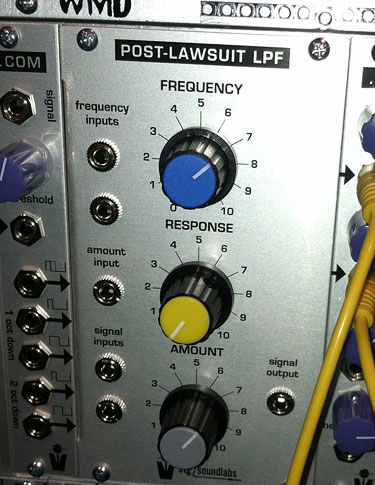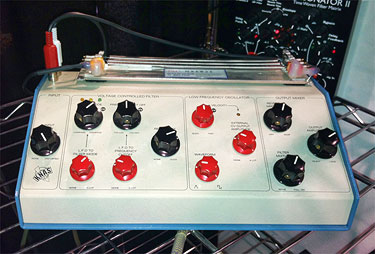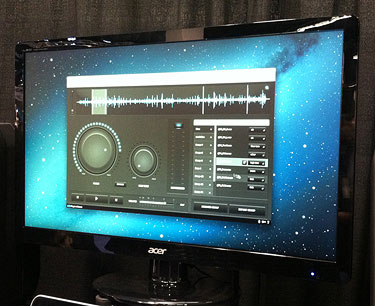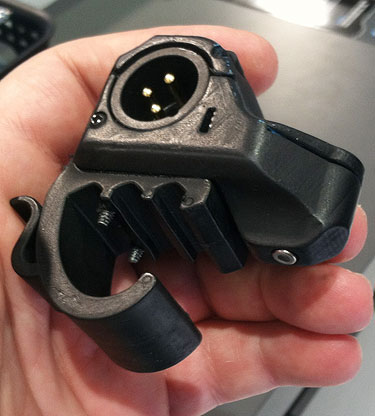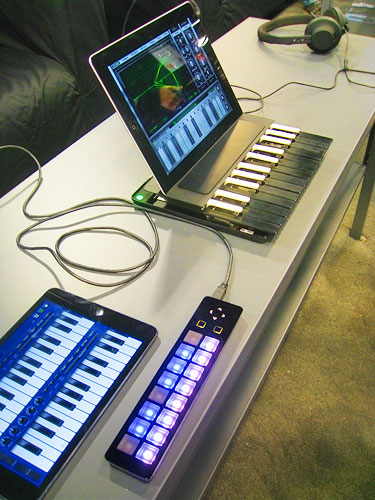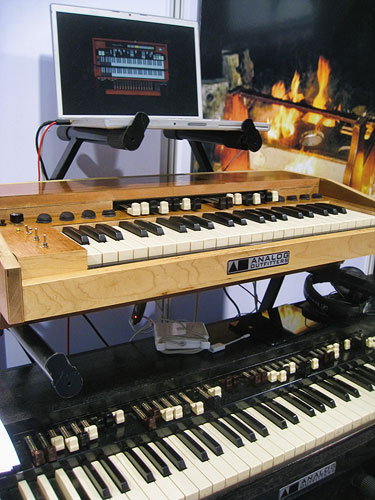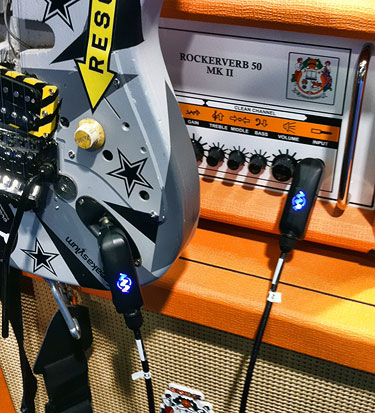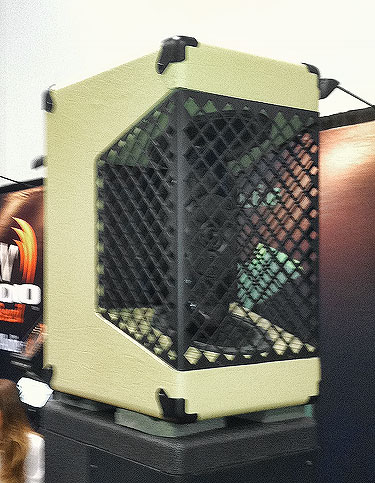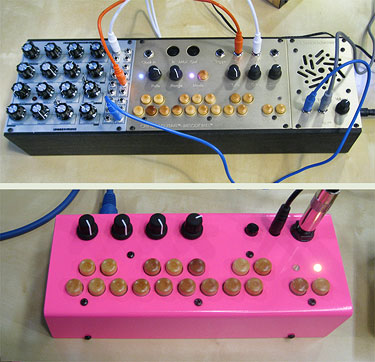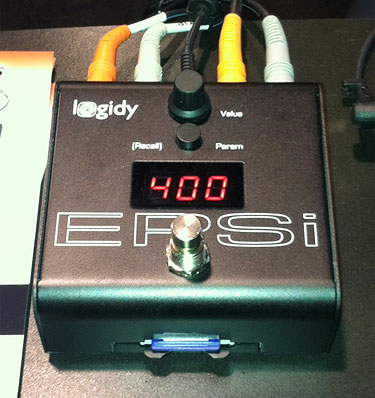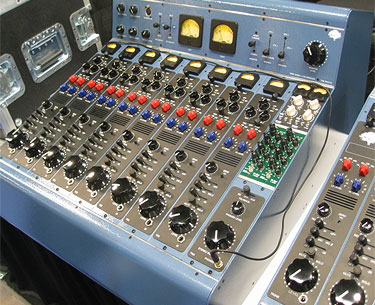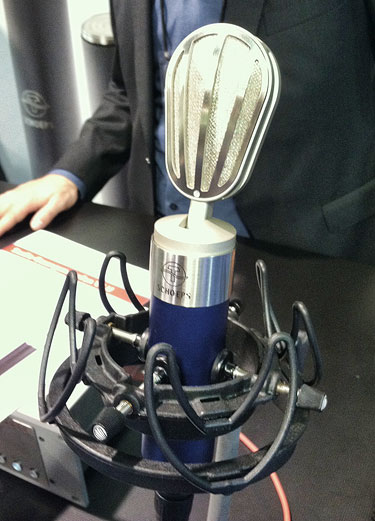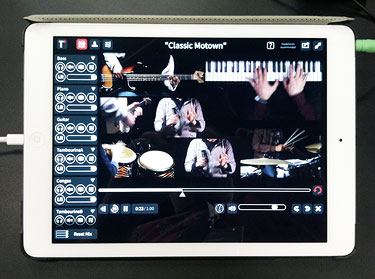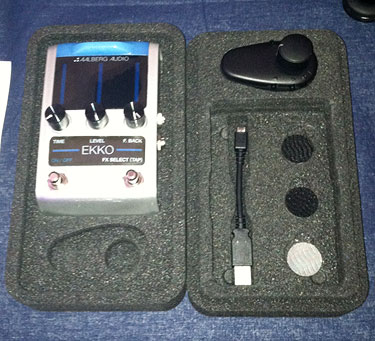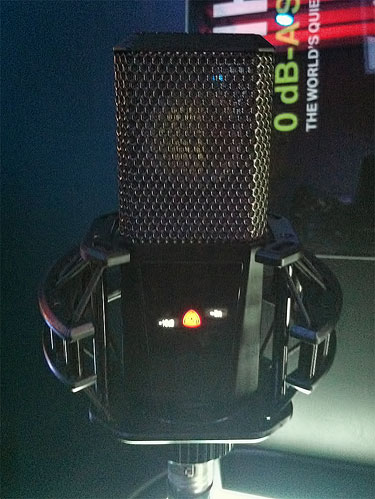Barry Wood's NAMM Oddities 2014 Edition

Techno Geek Toys
There Must Be a Good Story Here
With a name like "Post-Lawsuit LPF" there must be a tale to tell. Their website talks about the ARP 4072 submodule but it doesn't get into the juicy details.
Update: an Oddities reader clued me into the wrangling between Moog and Arp back in the day. There's a bit of related info on wikipedia.
- stg soundlabs
- www.stgsoundlabs.com
Ekdahl Moisturizer
The Big City Music is always a treasure trove for me. I believe I saw this in the booth last year but there was nobody around who could tell me about it.
This is a wonderful little spring reverb unit that has the spring exposed so you can do far more than just whack the side of the cabinet.
- Knas
- www.knasmusic.com
A Coagulant for Drums
Drumatom is an stand-alone piece of software that analyzes multiple drum tracks and algorithmically reduces the mic bleed.
Unless the phase relationship between the drums mics is perfect, the bleed tends to smear the overall sound of the kit. I could see this being a very useful studio mix tool.
- Accusonus
- 4. Kastritsi Rd.
- Kastritsi, Patras 26504 Greece
- www.drumatom.com
You Had Me At "Lasers"
Another technique for reducing mic bleed is the use of gates, which can be finicky to set up properly. They're also prone to opening when another drum is hit particularly hard.
This prototype system from Sennheiser uses lasers on the mic clips to generate a separate signal that can be used to trigger the gate. Since it's generating the signal based on the movement of the head, the chance of false triggers is nearly non-existent.
- Sennheiser USA
- www.sennheiser.com
An iPad Case With a Function
Very much like a kids' pop-up book, the C.24 iPad case opens up and provides a functional MIDI keyboard via Bluetooth.
The keys are velocity sensitive and it also does monophonic aftertouch. For good measure, they've also thrown in a ribbon controller that runs the length of the keyboard.
- Miselu
- 566 Brannan Street
- San Francisco, CA 94107
- www.miselu.com
Hammond Scavenging
When Analog Outfitters are done pulling out the juicy power amps from old Hammond organs, they cut down the case and turn the keyboard and drawbars into MIDI controllers.
It's too bad that Native Instruments has relegated their wonderful B4 virtual instrument to the abandonware heap. This would be the perfect companion hardware.
- Analog Outfitters
- 514 N. Neil Street
- Champaign IL 61820
- www.analogoutfitters.com
Why? Because They Could
This is the very first analog optical guitar cable. While this cable exhibits extremely low capacitance and is immune to RF, it's also more expensive than many guitars.
- Iconic Sound
- www.iconicsound.com
Another Uniquely Skinned Cat
This interesting guitar speaker has quite a wide dispersion pattern, which would be great for small gigs.
It's got one of the most unique speaker arrangements I've ever seen. There is a small vertical array suspended between two speakers that are angled about 30° from the horizontal plane.
- Yorba Acoustics
- (714) 404-8340
- www.yorbaacoustics.com
Chibi Synths
How could I not cover products from a company called "Critter & Guitari?"
They do make a number of cool Oddity-worthy mono synths with wooden buttons and optional speaker modules so they legitimately deserve a spot here.
- Critter & Guitari
- www.critterandguitari.com
Convolution in a Box
Convolution reverb has made the trip from large rack-mounted hardware, to software, and now to a stomp box.
This EPSi can produce reverb tails up to 6 seconds in length. The impulse responses are loaded from the CD card in the front.
I'm quite impressed that someone was actually able to do this.
- Logidy
- www.logidy.com
Heavy Metal
How could any signal passed through this beast come out the other end not sounding like the audio-equivalent of Captain America?
I particularly like the fact that they included four 500-series slots to allow you to add more analog goodness.
BTW, just to yank their chain, my first question to the guys at the booth was "What's the processor speed?"
- Tree Audio | Los Angeles
- www.treeaudio.com
Filling a Much Needed Void
This is a one of a kind DJ Console done up to look all steam-punky. Sometimes, one is too many.
- Guillemot Corporation
- BP 2
- 56204 La Gacilly Cedex, France
- www.hercules.com
Laid Back Vocals
The adjustable angle of Schoeps V4 U mic is just the ticket for capturing laid back vocal takes.
- Schoeps GmbH
- Spitalstr. 20
- 76227 Karlsruhe, Germany
- www.schoeps.de
If It Weren't for the Jacket…
I covered Wolfgang's iOS-controlled analog quad panner back in 2012.
While his newest 32-channel iteration is cool, I don't know if I would have included it this year if he hadn't been sporting this amazing jacket he bought in China, much to the horror of his family.
- Surfin Kangaroo Studio
- Friederike-Fliedner-Weg 62
- 40489 Düsseldorf
- +49 (0) 211 47 46 052
- surfin-kangaroo-studio.de
The Rehearsal Will Be Televised
Technology keeps pushing the frontiers of the "music minus one" concept.
Not only can you jam along with all the other musicians, you can watch your part being played from multiple camera angles.
If you're handy with video, Tutti is open to outside producers creating content for their product.
- Tutti Dynamics
- www.tuttidynamics.com
Stomp Box Remote
The Aero is a small wireless transmitter that is used to control the Ekko delay pedal. You can attach it to your guitar, strap, or belt and use it to bring up presets or change the delay time. The button acts as a momentary switch, too so you can use it for tap tempo.
- Aalberg Audio
- Kjemiblokk 1, 2. etg, Sem Sælands vei 14
- Trondheim, 7491, Norway
- www.aalbergaudio.com
Unbake The Cake
I sat down with the people at Audiomanix and was reasonably impressed with their software's ability to separate the vocal and the instruments.
I was substantially less impressed with the fact that they're adopting the "software rental" model where you have to pay monthly or yearly to use the software.
- Audionamix
- www.audionamix.com
Put An iRing On It
This is kind of a cute approach for a 3D controller. You put the rings on with the dot pattern facing the iOS device and it uses the camera to translate the X, Y, and Z position to controller data.
It would be even more interesting if it supported OSC.
- IK Multimedia US, LLC
- 1153 Sawgrass Corporate Pkwy.
- Sunrise, FL 33323
- www.ikmultimedia.com
A Flock of Oddities
Newcomer Birdio hit the Oddity track at full speed on their first outing. I don't know which one I like best, the over-ear metronome, the instrument cable LED flashlight, or the branch-like 1/8" cable 4-way splitter.
- Birdio Gear Limited
- 852-26903269
- www.birdiogear.com
A Quiet Mic With a Mind of Its Own
While the self-noise of 0dB might allow you to record a mosquito passing gas, the feature that impressed me most was the mic's ability to detect internal preamp distortion and automatically pad down the mic.
At one time or another, all recording engineers run into the situation where a great take was marred by a musician who got a little too enthusiastic and overloaded the mic. This makes for a great recording safety net.
- Lewitt GmbH
- Mooslackengasse 17
- 1190 Vienna, Austria
- www.lewitt-audio.com
©2014 Barry Wood
